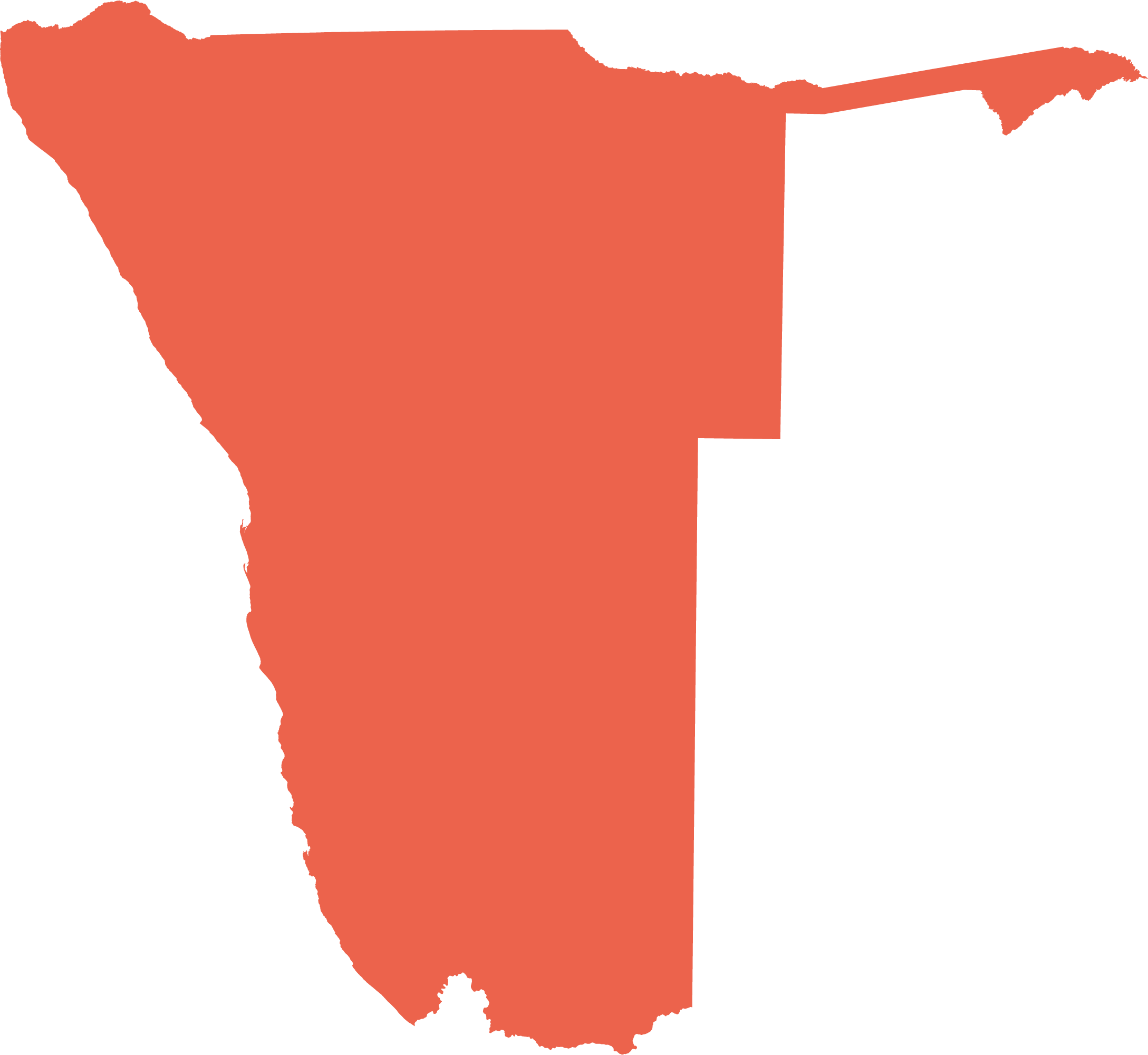Skip to main content
Key points
- Namibia's topography is characterised by features found across southern Africa: a continental shelf and coastal plain separated by well-defined highlands from a broad, flattish area much of which stands 1.0–1.5 kilometres above sea level. In Namibia, this broad area forms part of the great Kalahari Basin. Over one third of Namibia lies beneath a cover of wind-blown sand.
- Namibia's continental shelf is broader than elsewhere in southern Africa, reaching 180 kilometres offshore at the Orange River mouth. Beyond this shelf, the Atlantic drops sharply to an abyssal plain that reaches depths of more than 5,000 metres, but is broken by the Walvis Ridge, a mountain chain of extinct volcanoes that extends over 2,500 kilometres from Namibia's northern coast to the islands of Tristan da Cunha. Numerous tall seamounts protrude above the abyssal plain.
- Fifty-five per cent of Namibia lies between 1,000 and 1,400 metres above sea level, much of this covering the eastern half and central-northern areas. Only 4.2 per cent of the land rises above 1,600 metres, and 8.3 per cent below 500 metres above sea level.
- Fourteen islands lie along the coast between the Orange River mouth and Walvis Bay. All are small, ranging between 10 and 140 hectares, but most are important roosting and breeding areas for seabirds and seals. The islands lie within the Namibian Islands' Marine Protected Area.
- Sea levels have varied between several hundred metres below and above present levels as a result of uplift, subsidence and climate change.
- About 61 per cent of the coast is predominantly sandy and 39 per cent mainly rocky. Sandy parts of the coast may expand or retract by many metres per year as the coastline shifts east or west, and peninsulas and dunes creep northwards.
- The oldest rocks in Namibia probably formed between 2,650 million and 1,200 million years ago, but it is not known to what landmasses they then belonged. More clarity comes after the formation of Rodinia between 1,200 million and 1,000 million years ago, a supercontinent on which many parts of Namibia were then located. Rodinia broke apart into the Kalahari, Congo and Rio de la Plato cratons about 900 million years ago. The Khomas and Adamastor oceans formed between the cratons.
- The three cratons converged again between 600 million and 550 million years ago to form the new supercontinent of Gondwana. In the process, sediments deposited in the oceans were raised, compressed, heated and metamorphosed into geological features that now comprise much of Namibia.
- Much of western and central Namibia was at times beneath glaciers, large shallow lakes or sand dunes. Together with eruptions and intrusions associated with Gondwana's breakup, these conditions left features that shape many of Namibia's current landscapes.
- Gondwana began to break up about 180 million years ago, but it was the separation 132 million years ago that led to the split of South America from western Africa, including Namibia, and which gave southwestern Africa a coast for the first time.
- The margins of southern Africa lifted about 70 million years ago, leaving a large basin covering much of central southern Africa – the Kalahari Basin. Rivers and wind have deposited sediments into the basin from material eroded off the subcontinent's highland margin ever since. Sediments eroded off the highlands were also deposited to the west where they expanded the coastal plain.
- Namibia is rich in minerals, the most valued being diamonds, gold and uranium. Others mined on a significant scale are zinc, copper, lead, tin, rare earth elements and various dimension stones.

